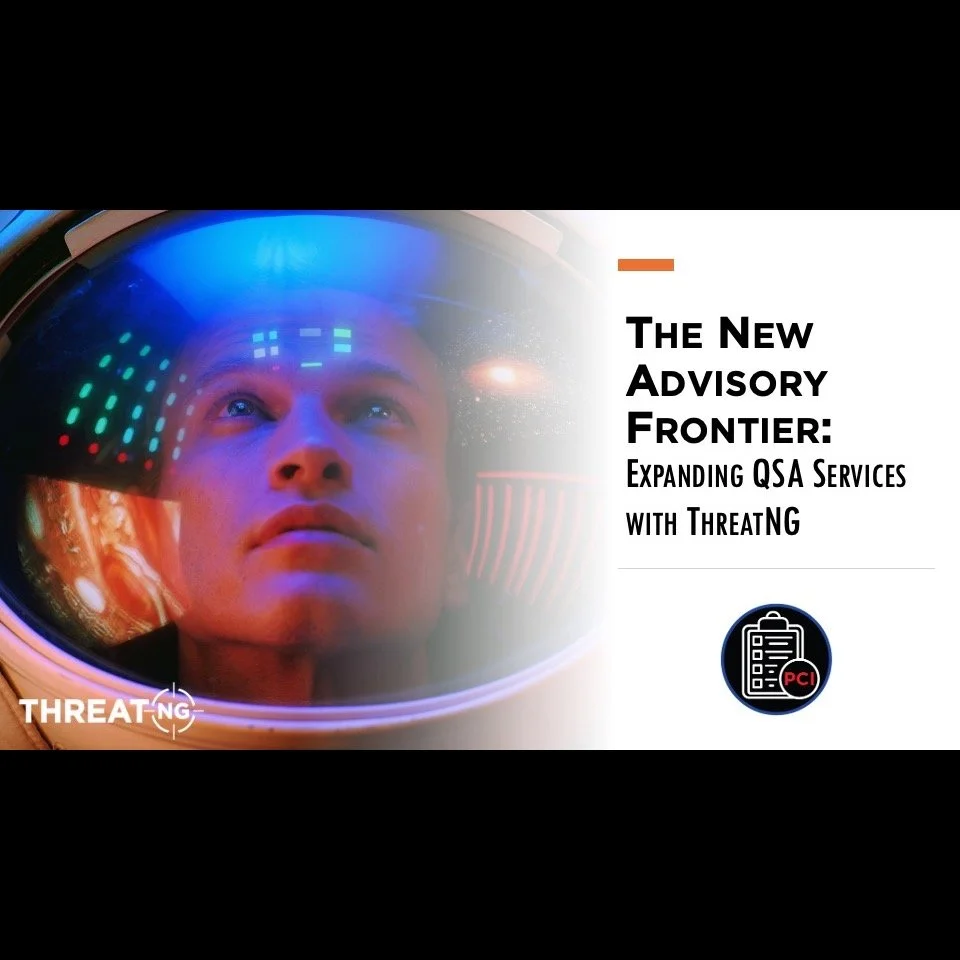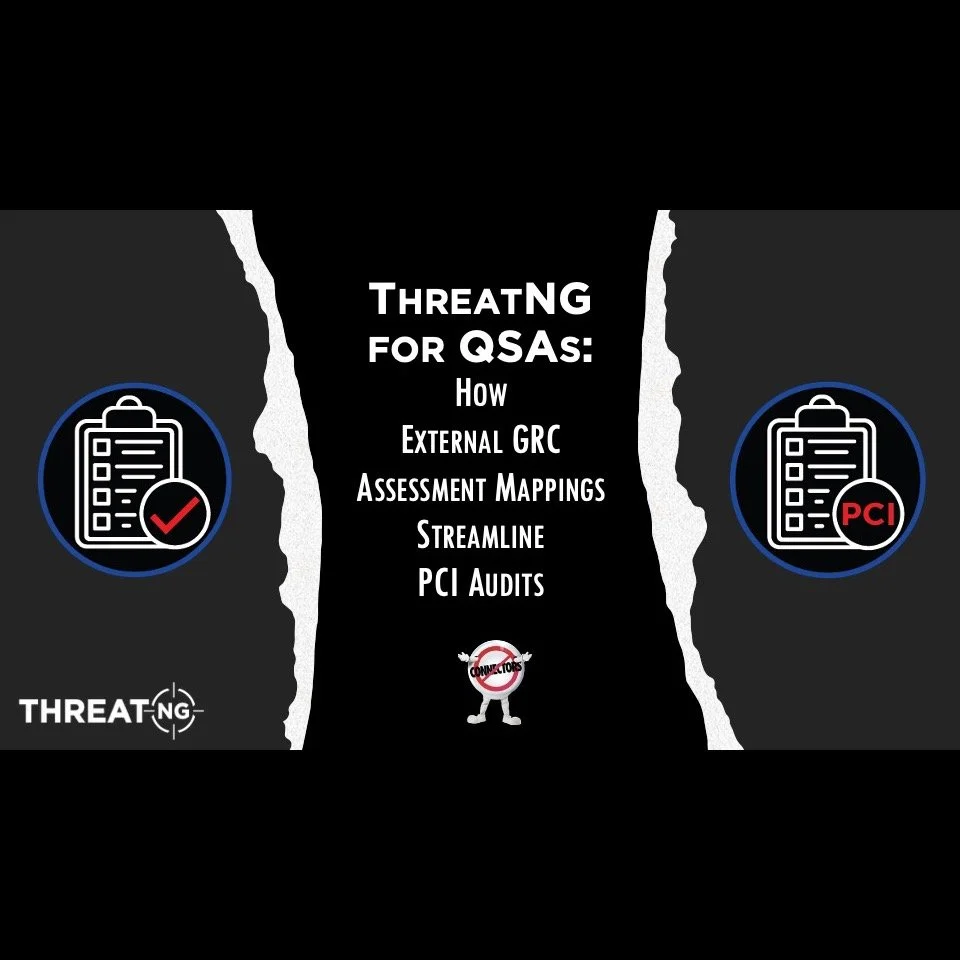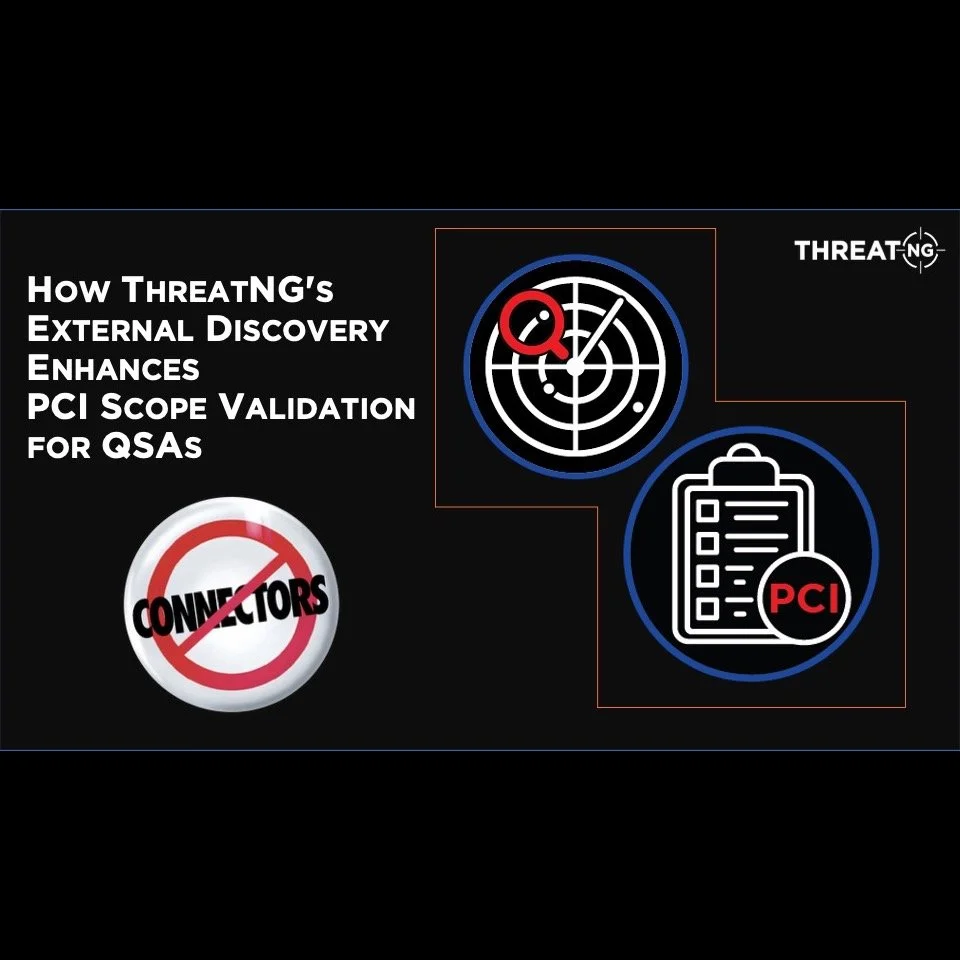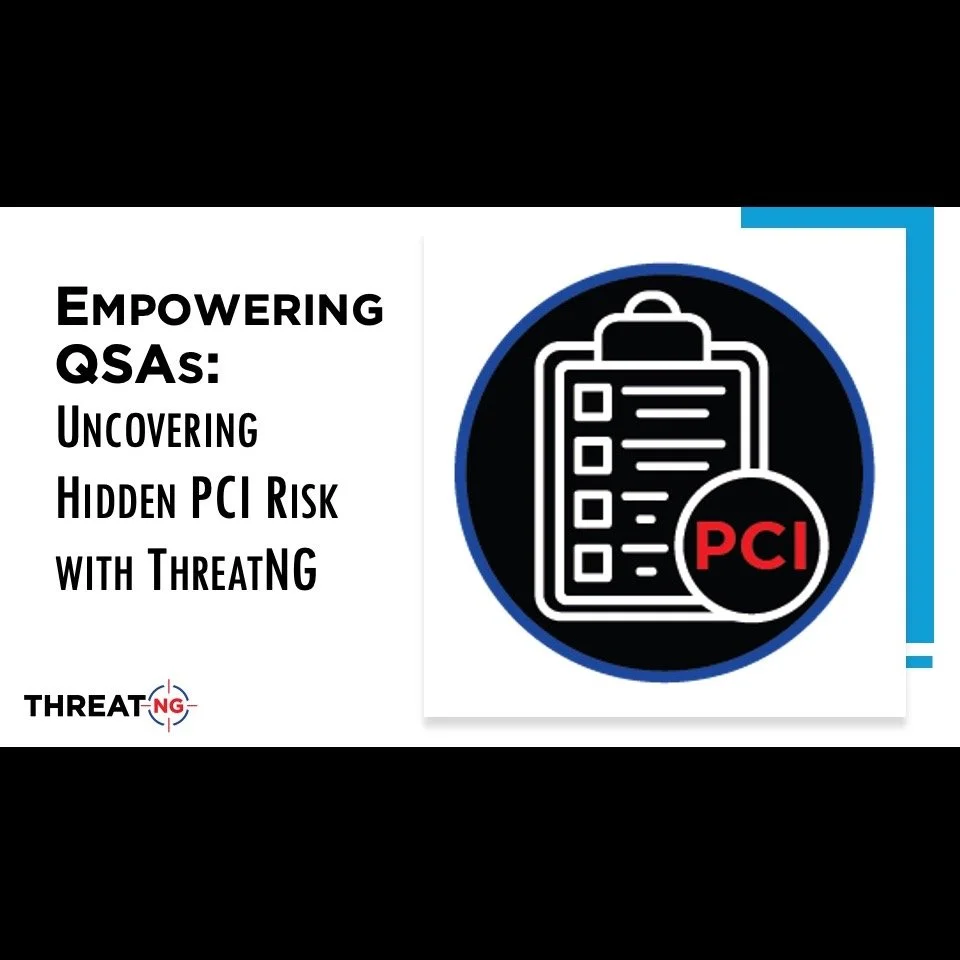
ThreatNG FAQ for Qualified Security Assessors (QSAs)
This FAQ is designed to address common questions and objections from Qualified Security Assessors (QSAs) about ThreatNG's capabilities. It highlights how ThreatNG serves as a powerful and frictionless complement to traditional PCI DSS assessments, helping you save time, enhance your credibility, and open up new advisory opportunities. For more information, please visit threatngsecurity.com/pci.
-
ThreatNG's approach is fundamentally different and profoundly complementary to traditional scans. While an ASV scan is a periodic, compliance-driven "snapshot-in-time" assessment of "known technical vulnerabilities" within a "defined network perimeter", ThreatNG provides a continuous, attacker-centric perspective on your client's entire external attack surface and digital risk. ThreatNG's capabilities are purely external and frictionless, operating with "no connectors" to mirror the reconnaissance techniques of a real-world adversary. This allows it to uncover a broader range of risks that traditional scans cannot detect.
-
ThreatNG’s continuous monitoring uncovers critical non-technical and digital risks that are often invisible to conventional scanning tools. These include:
Compromised Credentials: ThreatNG identifies "Compromised Emails" found on the dark web, a threat "traditional scans do not possess the capability to search for". This intelligence is crucial for PCI DSS Requirements 8.3.1 (MFA for CDE access) and 12.10.5 (Incident Response).
Sensitive Code Leaks: ThreatNG discovers and analyzes public code repositories for "Code Secrets Found" like API keys and credentials. This is a "critical data leakage risk" and a "significant attack vector for unauthorized access" that traditional scans do not analyze. This helps you validate compliance with PCI DSS 3.2 and 6.6.
Misconfigured Cloud Assets: ThreatNG detects "Files in Open Cloud Buckets" that are publicly accessible. This is a non-traditional risk that bypasses network-centric scans and directly impacts PCI DSS data protection requirements, such as 3.1.1 (data retention) and 7.2.1 (access control).
Phishing Infrastructure: ThreatNG's "BEC & Phishing Susceptibility" assessment identifies "Domain Name Permutations - Taken with Mail Record", which are "prime indicators of phishing infrastructure" that traditional scans do not perform. This provides intelligence on social engineering risks and helps you validate compliance with PCI DSS 5.4.1.
Subdomain Takeover Susceptibility: ThreatNG assesses a website's susceptibility to subdomain takeovers by analyzing DNS records and other relevant factors. This is a critical external risk often missed by network-centric scans but is directly applicable to PCI DSS 1.4.2 (maintaining an inventory) and 11.3.1 (external penetration testing).
Insecure Web Application Configurations: ThreatNG identifies a detailed list of web application misconfigurations like "Subdomains Missing Content Security Policy" and "Subdomains with No Automatic HTTPS Redirect". These findings are critical for PCI DSS 4.2.1 (strong cryptography for CHD transmission) and 6.4.2 (application security controls).
-
ThreatNG's intelligence streamlines your audit process and helps clients focus their remediation efforts, optimizing resource use.
Expedited Scope Validation: ThreatNG’s external discovery helps you "expedite the scope validation phase of the assessment" by providing an independent data set to identify "forgotten subdomains" or misconfigured cloud assets. This saves you time in discovery and clarification, allowing you to focus on higher-value work.
Smarter Remediation Prioritization: ThreatNG's DarCache Vulnerability intelligence moves beyond static CVSS scores. It integrates EPSS (likelihood of exploitation) and KEV (actively exploited in the wild) to help you prioritize remediation based on real-world exploitability, not just severity. This ensures clients focus their resources on the most impactful risks first, meeting the timely remediation requirements of PCI DSS 11.6.1 more efficiently.
Automated GRC Mapping: The External GRC Assessment Mappings (PCI DSS) feature automatically links external findings to relevant PCI DSS controls. This "simplifies the reporting process" for auditors and internal stakeholders, saving the time you would have spent on manual mapping and contextualization.
-
ThreatNG helps you move past "mere audit fulfillment" to a more profitable, strategic advisory role.
Proactive Threat Intelligence Integration: ThreatNG’s reports offer "concrete, real-world evidence" of threats that traditional methods miss, like compromised email addresses. You can use this data to provide "enhanced advisory services on proactive threat intelligence integration, incident response plan testing... and advanced MFA implementation strategies".
Secure Development Lifecycle (SDLC) Consulting: If ThreatNG identifies "Developer Resources Mentioned" with exposed admin pages or "Code Secrets Found" in public repositories, you have a direct opportunity to offer "specialized secure SDLC consulting services" and help clients implement "secret management solutions" to prevent future leaks.
Ransomware Preparedness Workshops: ThreatNG’s intelligence on "Ransomware Events" from its DarCache repository enables you to evaluate a client's incident response plan against "real-world, current threats". This creates an opportunity to offer "specialized ransomware preparedness workshops, tabletop exercises, and consulting" that are highly relevant and valuable to clients.
Third-Party Risk Management Advisory: ThreatNG’s "Supply Chain & Third Party Exposure" assessment provides an independent view of vendor security. You can use this to offer advisory services on managing third-party risks, helping your client verify their PCI DSS compliance (Requirement 12.8) and address vulnerabilities in their broader payment ecosystem.
Continuous Compliance Monitoring: ThreatNG's constant monitoring capabilities allow you to offer a year-round service model that provides continuous visibility and risk management, moving your business beyond the periodic audit cycle.
Personnel and Governance Risk Advisory: ThreatNG provides unique insights by analyzing external signals like "Layoff Mentions" and "SEC Filings". You can use these findings to offer specialized advisory services that connect external signals to a client's internal controls, such as their employee termination process (PCI DSS 12.5.1), risk assessment process (PCI DSS 12.3.2), and security oversight.
External Threat Alignment and Adversary Simulation: ThreatNG's "External Threat Alignment" maps vulnerabilities to MITRE ATT&CK techniques, showing how an adversary might gain initial access. You can use this to offer advisory services on adversary simulation and threat modeling, which moves clients beyond generic compliance toward a truly resilient defense.
-
Evaluating ThreatNG is incredibly easy due to its purely external and frictionless nature. Since it performs "unauthenticated discovery using no connectors", there's nothing for your clients to install, configure, or grant internal access for. This allows you to quickly and easily see the value firsthand without disrupting your client's environment.








